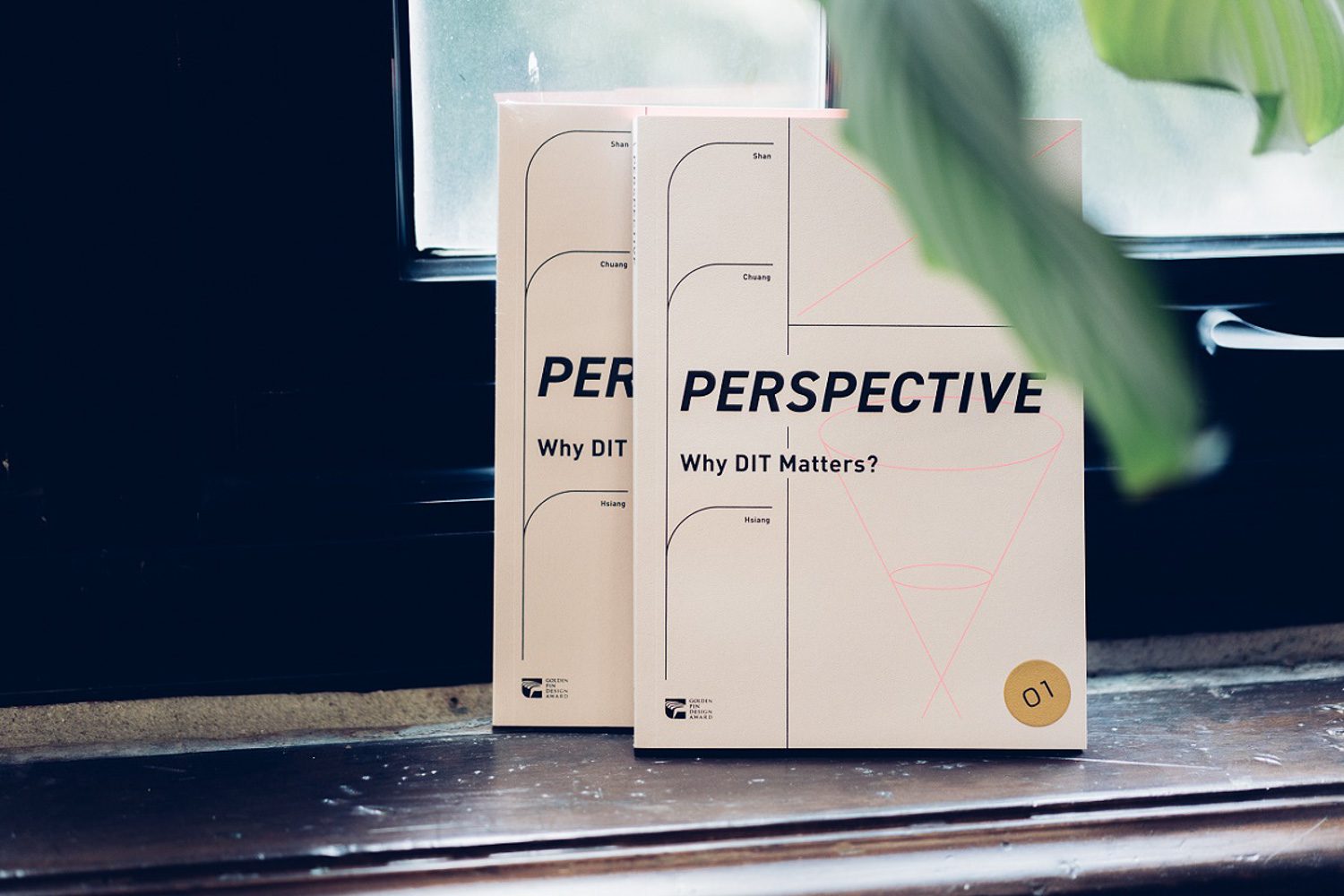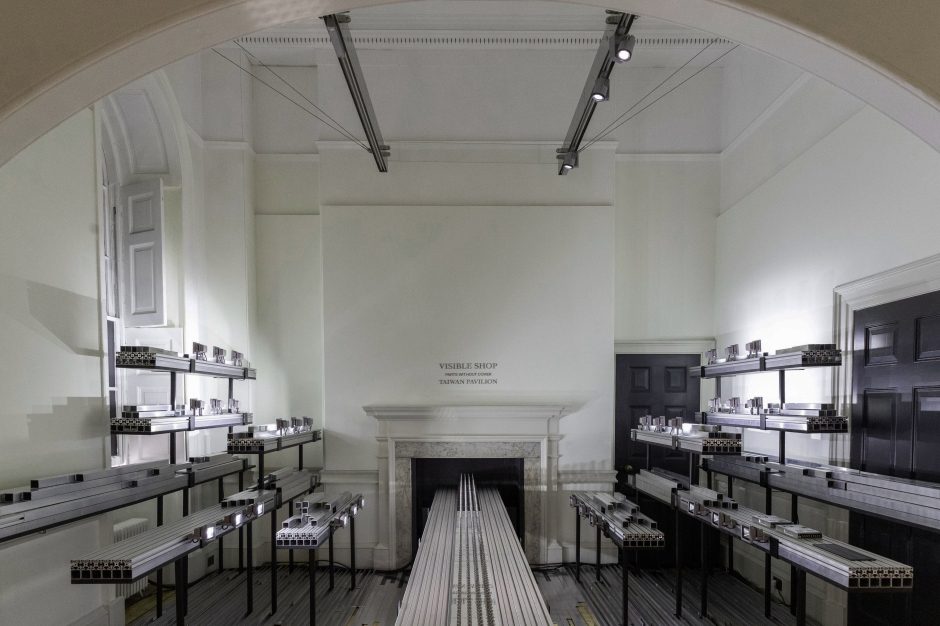
Oliver Lin, the Vice President of TDRI
ART4D TALKS WITH OLIVER LIN, THE DEPUTY DIRECTOR OF THE TAIWAN DESIGN RESEARCH INSTITUTE (TDRI) ABOUT THE UTILIZATION OF RESEARCH TO DEVELOP THE DESIGN INDUSTRY
TEXT: KITA THAPANAPHANNITIKUL
PHOTO COURTESY OF TAIWAN DESIGN RESEARCH INSTITUTE
(For Thai, press here)
The term ‘Creative Industry’ has evolved into a pivotal cornerstone within the fundamental policies of numerous countries, strategically employed to fortify their overall economies. Taiwan, standing prominently among these nations, took a definitive step in 2020 by establishing the Taiwan Design Research Institute (TDRI), positioning it as the operational hub for the country’s dynamic creative economy. The institute aspires to serve as both an organizational structure and a platform, utilizing information and analysis to advance public and private sector-driven innovation and design initiatives in Taiwan.
In connection with ‘art4d PINNED PLACE,’ an event organized towards the end of last year where art4d brought design enthusiasts to Taiwan to take part in the Golden Pin Design Award and Taiwan Design Week, art4d met and talked with Oliver Lin, the Deputy Director of the Taiwan Design Research Institute (TDRI). The conversation centered around the institute’s primary objectives, its utilization of research and data to foster the development of the design industry, and its perspective on nurturing the growth of the creative economy through international collaborations—a prospect that opens up exciting possibilities and envisions boundless advancements in the future of Taiwan’s expanding design realm.

The 2023 Golden Pin Design Awards sets a high standard for the award ceremony, generating great anticipation among all nominated designers.
art4d: First, please introduce the Taiwan Design Research Institute (TDRI) and outline your responsibilities.
Oliver Lin: TDRI is a nonprofit and semi-official government support organization formerly known as Taiwan Design Center. Our mission is to transform Taiwan by integrating design across various disciplines, including commercial, social, cultural, and even fundamental infrastructure such as transportation and healthcare.
The TDRI trajectory and duty are focused on five main categories: ‘Design Policy,’ ‘Industrial Innovation,’ ‘Public Service,’ ‘Social Innovation,’ and ‘Design Diplomacy.’ These categories are essentially based on our design research, and our 200-member team is divided into three groups. The first group is a design research group, the second group, which I oversee, takes care of design innovation, industry innovation, and design diplomacy, and the third group is in charge of public service and social innovation.
Additionally, we have a design team consisting of approximately 40 individuals for designing projects initiated through our design research. This approach forms the foundation of our methodology, and the clear direction of these categories guides our diverse staff, contributing to our organizational structure and efficient functioning.

With 200 employees, TDRI is a significant organization driving the development of Taiwan’s design industry, leading design to transform Taiwan and showcasing Taiwan to the world.
art4d: Can you exemplify one of your projects from your research?
OL: For example. We published the two books from our research, ‘Perspective: why DIT Matters’ and ‘Circular Design Guideline.’ The first book encapsulates the understanding of why design matters and the power of design grounded on the core idea from three Chinese words Shan (Creation), Chuang (Create), and Hsiang (Share).
The second book, ‘Circular Design,’ approaches the concept of circular design, providing insights into its application and offering helpful guidance for those initiated on new product development. So rather than solely focusing on the design only, our strategy involves initiating the design process with research and data, setting the foundation before proceeding with other steps further.

TDRI publishes ‘PERSPECTIVE,’ showcasing numerous compelling case studies to convey how Design in Taiwan (DIT) is playing an increasingly significant role globally.
art4d: What is Taiwan’s design value based on your design research?
OL: According to our research, we think Taiwan’s design value is the 3 pillars: sustainability, friendliness, and technology.
Firstly, sustainability is a ubiquitous concept in Taiwan, evident in numerous sustainable products, infrastructure, and systems embraced by both the government and citizens. The second pillar is friendliness; Taiwanese designers consistently prioritize creating products that are friendly to both people and the environment. The third pillar is technology, with Taiwan showcasing significant strength, especially in the semiconductor sector. We integrate these technologies into our products and designs.
Thus, I consider these three elements as the core values of Taiwan’s design. Every time we participate in international design events, such as the London Design Biennale or Bangkok Design Festival, we consistently choose these three concepts as a tool to identify our design principles to the world.

The Taiwan Pavilion cleverly uses extruded aluminum tubes, screws, and electromagnetic devices to create a modern hardware store, emphasizing Taiwan’s flexibility in global manufacturing. It wins the Best Design Medal at 2023 London Design Biennale.
art4d: Based on experience. What is the difference between Taiwan and Thailand’s design industry?
OL: Although Thailand and Taiwan share commonalities in diversity and Asian culture, I believe the difference is Taiwan’s design emphasis on high-tech development due to our proficiency in manufacturing high-quality semiconductors. On the other hand, Thailand is well-known for distinctive lifestyle products, particularly in everyday items like furniture, tableware, handmade product design, and clothing, reflecting a strong connection between design and people’s daily lives.
Another difference between Taiwan and Thailand is in market volume and characteristics. Thailand’s population is approximately three to four times larger than Taiwan’s, while Taiwan, per se, is a small island and exports about 90% of its products overseas. This reason substantially leads to differences in consumer characteristics, with Taiwan’s products needing to be adaptive and compatible with various cultures. In contrast, Thai design obviously stands out for its style, embodying a leisurely and relaxing aesthetic permeated with unique cultural elements.
Whenever I visit Thailand, I often find myself bringing back lifestyle products and various items to my home. Even some of the tableware I currently use are from Thailand.
art4d: What is the goal of the Golden Pin Design Award and Taiwan Design Week?
OL: The Golden Pin Design Award (GDPA) is a design platform primarily focusing on Asia, where approximately 95% of the entries come from Asian countries such as China and Thailand. Currently, nearly half of the entries are from Taiwan, and the other half are from around the globe. We aspire for the Golden Pin Design Award to reach the same level of recognition as major design awards like the Red Dot Award and the iF Design Award. Presently, we have around 3000 entries, compared to the iF Design Award with 6000 and the Red Dot Award with 8000 entries. Our ultimate goal is that one day, the Golden Pin Design Award can influence not only the entire Asian region but also the global stage. That’s why we have to work harder right now; it’s a long way to go.
About Taiwan Design Week (TDW), several years ago, we had a similar event called ‘Taiwan Designers Week,’ organized by the Taiwan Designers’ Web, but it was a very localized event. Currently, TDRI has given this event a new brand, marketing approach, and positioning. With these changes, Taiwan Design Week has shifted its focus to the international level, aiming to connect Taiwanese design with the global stage. This transformation includes attracting foreign judges and speakers to generate global exposure for designers worldwide.

At the end of 2023, TDRI hosted the inaugural Taiwan Design Week, inviting numerous designers and industry experts from overseas to Taiwan, with the goal of establishing an international platform for Taiwan’s design community.
art4d: Regarding our program ‘art4d PINNED PLACED,’ which brings design enthusiasts from Thailand to explore design in Taiwan, what are your expectations for this program and its potential to foster collaboration between Thailand and Taiwan?
OL: I appreciate the initiative of bringing Thai visitors here. We. TDRI always expects to establish a connection between the design communities in Asia, especially between Thailand and Taiwan. I believe this program marks a positive beginning for that purpose. When the participants return, they may identify various possibilities and opportunities to bridge Taiwanese and Thai design. Besides, it may serve as a starting point for future collaborations. For example, Thai product designers could collaborate with Taiwanese graphic designers to create innovative solutions for the global market. There’s nothing better than a chance to understand the values of another country and discover opportunities to collaborate, fostering the design industry together.

